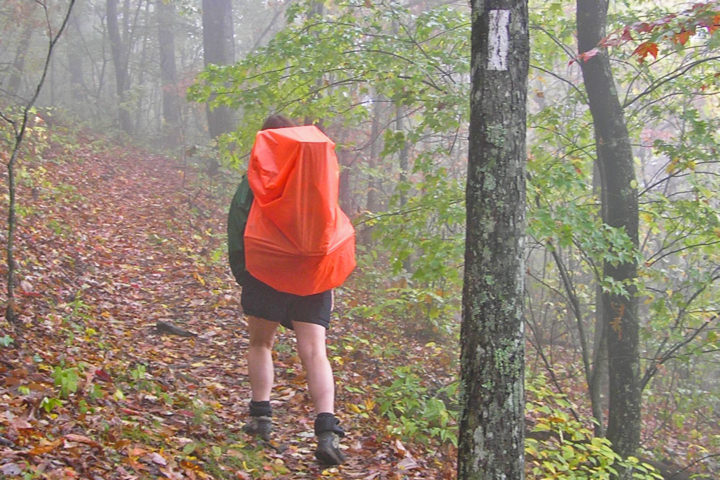Trail Update
Hurricane Helene’s Impacts on the Appalachian Trail and Nearby Communities
September 30, 2024
HARPERS FERRY, W.Va. – Hurricane Helene has left behind tremendous destruction in the southern Appalachian Trail (A.T.) landscape and surrounding communities. The first priority of Appalachian Trail Conservancy (ATC) in the wake of this disaster is to ensure our staff, volunteers, and partners are out of harm’s way. We have also begun working with our partners to provide resources and support to the communities impacted by this devastating storm, information for hikers, Clubs and volunteers, and coordination for future A.T. repair and clearing efforts.
Impacts on the A.T. Communities and surrounding Landscape
Hurricane Helene is the largest natural disaster—in terms of geographic footprint—to impact the Appalachian Trail in its 100-year history. While it is still too early to understand the extent of the damage to the A.T. itself, hundreds of thousands of people throughout the Southern Appalachians—including ATC staff—have been impacted by flooding, strong winds, tornadoes, downed trees, and impassable roadways, and are without power, clean water, internet, and other essentials. Some of the trail towns and A.T. Communities™ with the greatest need are Asheville and Hot Springs in North Carolina; Unicoi County (Erwin) and Roan Mountain in Tennessee; and Marion and Smyth Counties as well as the towns of Damascus, Pearisburg, and Narrows in Virginia.
“Our priority, first and foremost, is the safety and well-being of our staff, their families, first responders and all of our neighbors in the hard-hit communities in the Appalachian Trail landscape who lost so much in this tragic event,” said President and CEO of the Appalachian Trail Conservancy Sandi Marra.
In the near term, the ATC is working with the U.S. Forest Service to repurpose the Konnarock Trail Crew’s base camp facility in Sugar Grove to support the agency’s initial response, and our Damascus Trail Center will be available for town emergency response needs.
Marra added: “While we are eager and anxious to tackle the work necessary to restore sections of the A.T. impacted by Helene, we ask for patience. Critical infrastructure—water, electricity, and internet—must be fully restored and roads must be cleared for the ATC and our partners to evaluate the Trail’s conditions. Once we can safely access the A.T., we will identify the sections and features that need immediate attention and put a call out for volunteers to help restore the Trail.”
Over the coming weeks and months, the ATC will be working with the National Park Service, U.S. Forest Service, and state and local partners to inventory the damage to the treadway, trailheads, bridges, overnight sites, privies and other A.T. features. Landslides and falling trees could continue for some time, so we ask volunteers and trail crews to pause work on this section of the Trail and to coordinate closely with regional ATC teams.
Information for Hikers
Because of extreme damage in the southern Appalachian Mountains and active states of emergency in North Carolina, Tennessee, and Virginia, the ATC advises hikers and visitors to not recreate on the A.T. from Springer Mountain (NOBO mile 0) to Rockfish Gap (NOBO mile 864.6) at the time of this release.
Official Trail closures and advisories will shift in the coming weeks as the ATC and our partners determine the extent of the damage to the A.T. and surrounding communities. The most up to date Trail information for hikers, including official Trail closures from land managers, can be found at appalachiantrail.org/helene.
Thru-hikers who need to skip around closed or impassable A.T. sections are still eligible for 2,000-miler status. Thru-hikers can also suspend their hikes and continue where they left off when it is safe to do so and still be considered a thru-hiker. They will have twelve months from the date they choose to resume their hikes to complete the remainder of their journeys and still be recognized by the ATC as a thru-hiker.
How to Help
Donate to local relief efforts:
- North Carolina Relief Fund: https://pay.payitgov.com/ncdonations
- Virginia Emergency Relief Fund: https://www.vaemergency.gov/donate
- East Tennessee Action Fund: https://easttennesseefoundation.org
Donate to humanitarian and emergency response organizations:
- Red Cross: https://www.redcross.org/donate/donation.html
- World Central Kitchen: https://wck.org
- Appalachia Funders Network: https://www.appalachiafunders.org/
Stay informed about future volunteer opportunities to rebuild and repair the A.T.:
- Subscribe to the ATC’s weekly newsletter: https://appalachiantrail.org/trailway-news
- Sign up to become an Appalachian Trail volunteer: https://appalachiantrail.org/get-involved/volunteer
About the Appalachian Trail Conservancy
Founded in 1925, the Appalachian Trail Conservancy works passionately to manage and protect the Appalachian National Scenic Trail. As the only non-profit devoted exclusively to the entirety of the Trail and its landscape, we endeavor to keep its vast natural and scenic beauty healthy, resilient, and connected, so that everyone can experience its transformative power for generations to come. Together with our supporters, partners, and thousands of volunteers, we keep the Trail alive.
Media Contact: Ann Simonelli, 304.885.0482, asimonelli@appalachiantrail.org
Discover More

Plan and Prepare
Trail Updates
Know before you go — be aware of the latest Appalachian Trail conditions, weather advisories, and reroutes/closures.

Plan and Prepare
Safety
Learn about the hazards you may face when hiking the Appalachian Trail and how to avoid or prepare for them is the best way to stay safe.

Learn More
About Us
We are the stewards of the world’s longest hiking-only footpath, the Appalachian Trail.
